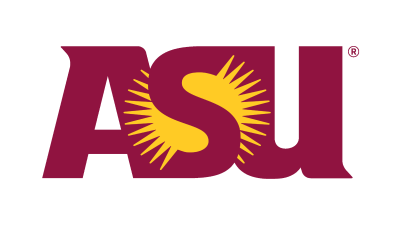

Arizona State University (Tempe campus)
Biomedical Engineering (Biological Devices), BSE
Study detals
: Bachelor's degree : Biomedical Engineering (Biological Devices), BSE ESBMEBDBSE : Full time : 48 MonthRequirements
Academic requirements
First-year students must:
- Have a 3.00 grade point average (GPA) (a "B" or better where "A"=4.00) from a secondary school. Some ASU programs may have higher admission or English proficiency requirements and may consider a minimum ACT or SAT score.
- Must have three years of high school coursework. (If you are currently in high school, ASU needs to see 9–11 grade coursework. If you have completed high school, ASU needs to see 10–12 grade coursework.)
- Must have and present a completed high school diploma or certificate.
Conditional admission
ASU may offer conditional undergraduate admission to international applicants to an on-campus program who meet the academic (aptitude) requirements but who are not proficient in English. This offer of conditional admission will give you time to improve your English proficiency before you start classes at ASU. Your conditional admission offer is good for up to three semesters, during which time you must meet one of these requirements to begin your ASU experience.
Competency requirements
International students who completed high school outside the U.S. are required to meet the following competency requirements:
- Math: four years (algebra I, geometry, algebra II and one course requiring algebra II as a prerequisite).
- Laboratory science: three years total (one year each from any of the following areas are accepted: biology, chemistry, earth science, integrated sciences and physics).
Provide evidence of English language proficiency (TOEFL 61)
Additional requirements:
Minimum 1210 SAT combined evidence-based reading and writing plus math score or minimum 24 ACT combined score, or minimum high school GPA of 3.00 in ASU competency courses, or class ranking in top 25% of high school class, and no high school math or science competency deficiencies
Speciality
This program may be eligible for an Optional Practical Training extension for up to 24 months. This OPT work authorization period may help international students gain skills and experience in the U.S. Those interested in an OPT extension should review ASU degrees that qualify for the STEM-OPT extension at ASU's International Students and Scholars Center website.
The OPT extension only applies to students on an F-1 visa and does not apply to students completing a degree through ASU Online.
Transfer admission requirements:
Transfer students with fewer than 24 transferable college credit hours:
- minimum transfer GPA of 3.00 for fewer than 24 transfer hours, and
- no high school math or science competency deficiencies, and
- minimum 1210 SAT combined evidence-based reading and writing plus math score (or 1140 if taken prior to March 5, 2016) or minimum 24 ACT combined score, or a minimum high school cumulative GPA of 3.00 in ASU competency courses, or class ranking in top 25% of high school class
Transfer students with 24 or more transferable college credit hours must meet EITHER the primary OR the secondary criteria (not both):
Primary criteria
- minimum transfer GPA of 3.00 for 24 or more transfer hours, and
- no high school math or science competency deficiencies (if ASU Admission Services requires submission of a high school transcript)
Secondary criteria
- minimum transfer GPA of 2.75 for 24 or more transfer hours, and
- minimum GPA of 3.00 in all critical courses for Terms 1 and 2 (see major map for critical courses)
Additional information
Program description
The BSE program in biomedical engineering with a concentration in biological devices provides in-depth knowledge of cell biology and helps students learn to apply that knowledge to solve engineering problems pertinent to medicine and other fields, including synthetic biology.
The biomedical industry has many branches that require depth of understanding of cell biology and its techniques, including immunohistochemical diagnostics, blood-contacting materials, controlled-release therapeutics and local delivery of therapeutics.
With courses that cover engineering and life sciences and that tie the two together, graduates are able to apply their skills in an ethical and a sustainable manner to make contributions that address societal and individual needs.
Concurrent program options
Students pursuing concurrent degrees (also known as a “double major”) earn two distinct degrees and receive two diplomas. Working with their academic advisors, students can create their own concurrent degree combination. Some combinations are not possible due to high levels of overlap in curriculum.
Accelerated program options
This program allows students to obtain both a bachelor's and master's degree in as little as five years. It is offered as an accelerated bachelor's plus master's degree with:
- Biomedical Engineering, MS
Acceptance to the graduate program requires a separate application. Students typically receive approval to pursue the accelerated master’s during the junior year of their bachelor's degree program.
Global opportunities
Global experience
With more than 300 Global Education program opportunities available to them, biomedical engineering students are able to tailor their experience to their unique interests and skill sets. Whether in a foreign country, in the U.S. or online, students build communication skills, learn to adapt and persevere, and are exposed to research and internships across the world, increasing their professional network.
Career opportunities
Graduates of this program are well qualified for entry-level positions, including quality assurance, regulatory affairs and project management. Graduates are also highly qualified to seek advanced degrees if they wish to pursue research and design positions.